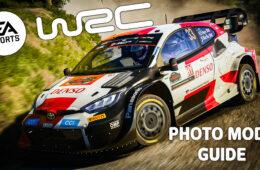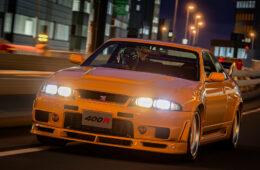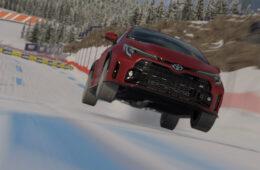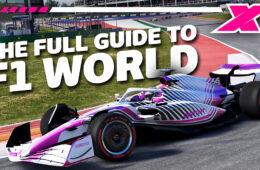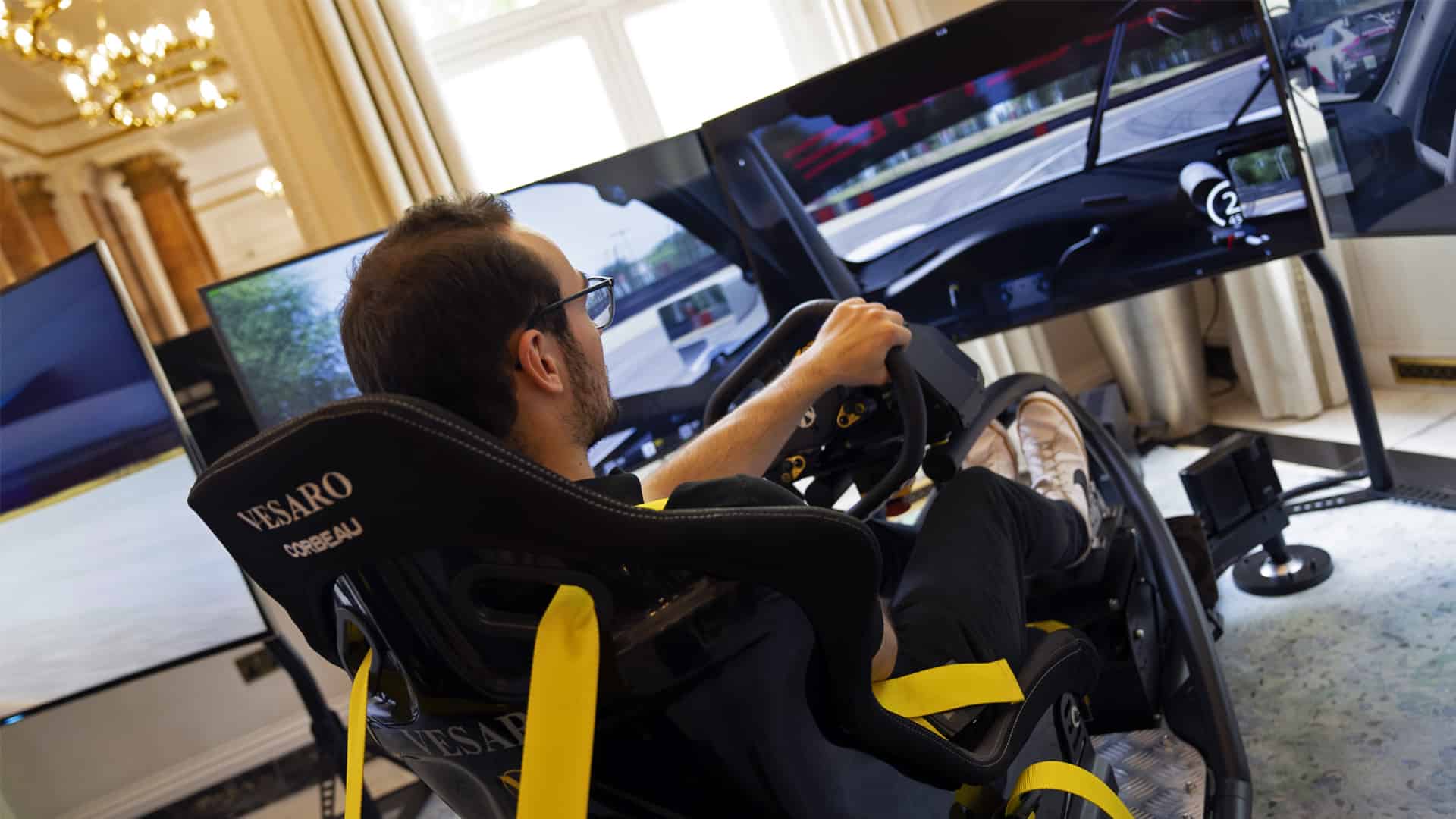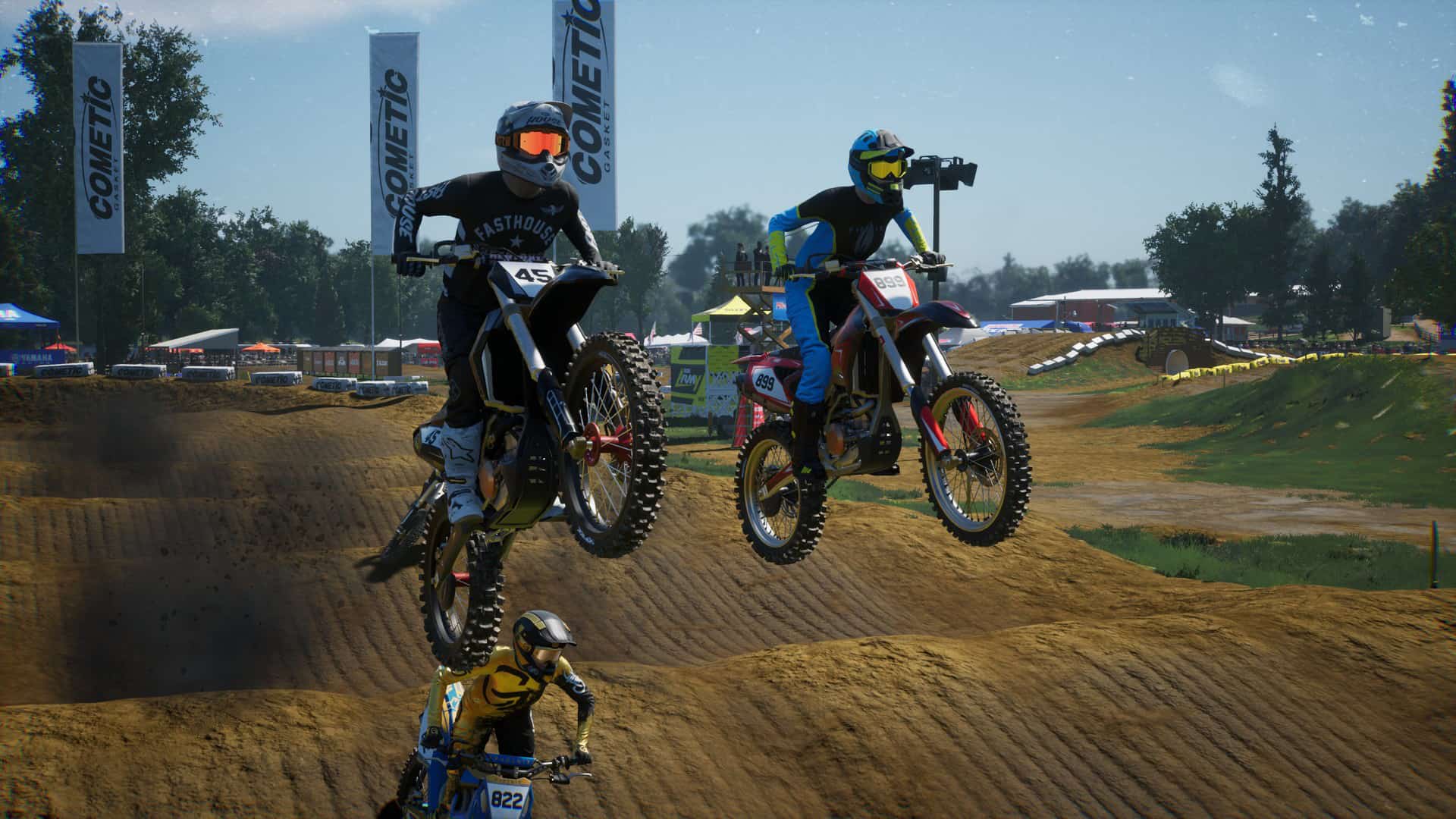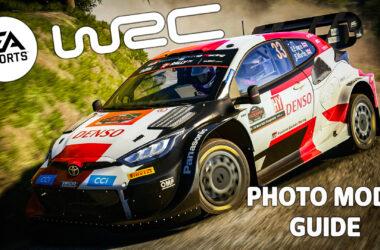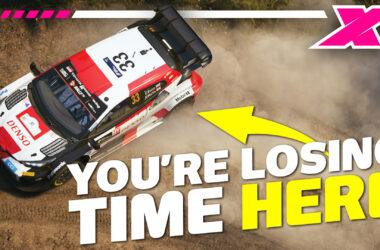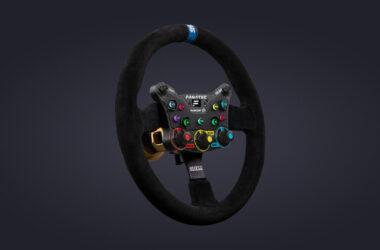In the world of sim racing, we constantly strive for ultimate immersion. Using technology to mimic the sensations a driver may experience in the real world is a significant element, and various forms of technology have been continuously developed over the years in the pursuit of realism.
Virtual reality, wind generation, direct drive wheel bases and hydraulic pedals. All of these elements are designed with one main purpose – to make sim racing as close to motorsport as possible.
It’s also fair to say that in many cases, the level of immersion correlates with a driver’s level of enjoyment. Sure, not everyone has the ability to muscle a Formula 1 car around the streets of Monte Carlo without hitting the barriers, but even if the cars themselves have to be somewhat accessible, most will still enjoy the realistic physical sensations delivered from their chosen hardware.
One of the biggest differences between virtual and reality is movement. Even if you are driving at 230mph down the Mulsanne Straight in a game, you remain stationary. That is, if you aren’t using a motion simulator.
Motion rigs come in all shapes and sizes, and in a similar vein to car development, different companies are constantly trying to develop unique methods to optimise the experience. A popular choice involves the use of haptic technology through motors and actuators.
In simple terms, haptic technology in a sim racing context uses a combination of movement, vibration and texture to give the user realistic physical sensations in a virtual setting.
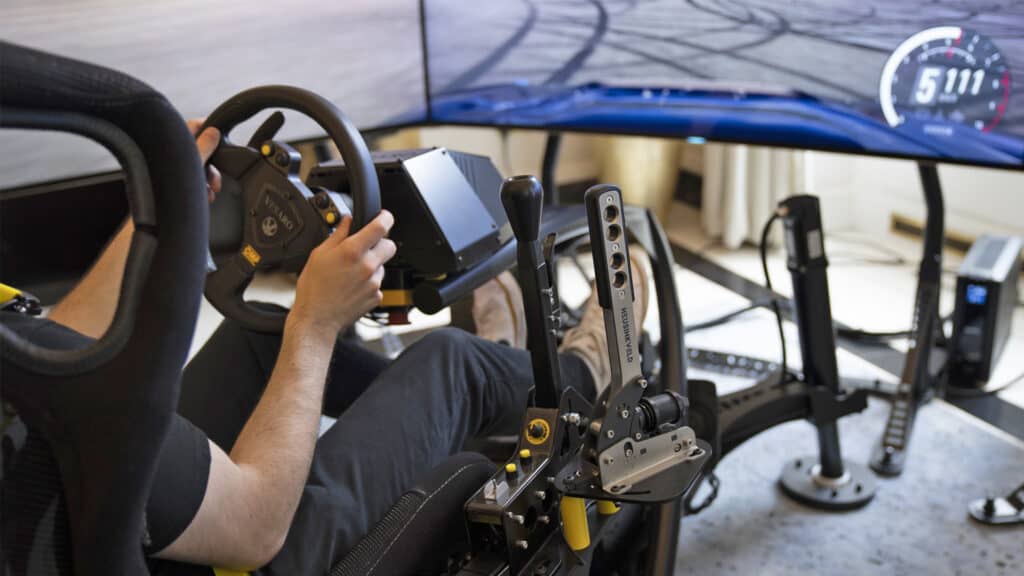
A leader in this segment is the Canadian company D-BOX, which specialises in the implementation of haptic technology in a variety of forms, ranging from theme park attractions and cinema chairs to home entertainment systems and of course, sim racing cockpits.
At a recent event, I was able to try out both its current Gen 3 motion system as well as its soon-to-be-launched Gen 5 concept. Both set-ups use the same four-point actuator design (one on each corner), and although both deliver a similar experience in practice, the latest creation is more refined and compact in its design. In both instances, the aim is to help add a sensory overload when racing in a virtual environment.
First up, I put the G3 system through its paces tackling one of Greece’s most demanding stages on DiRT Rally 2.0 in a Subaru Impreza World Rally Car.
I have experienced motion platforms before, but this one felt specifically refined and sorted straight out of the box. Every specific feature in-game such as water splashes, rocky sections, jumps and elevation changes gave me a unique sensation.
This shouldn’t come as a surprise, given the high fidelity of the D-BOX system. It speaks directly to the game’s software and creates a bespoke combination of feedback for each individual ‘event’.
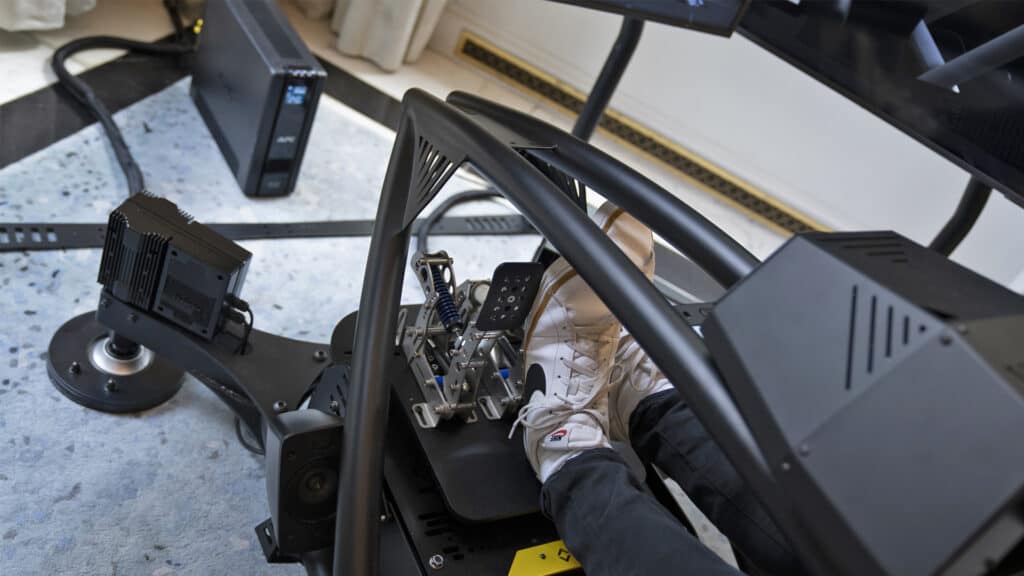
For example, a rumble strip will create a certain level of vibration, an elevation change will create a certain type of movement. There are over 65,000 possible combinations of feedback, and this level of detail really shone through.
The rocky sections of the stage felt particularly bumpy, the big jumps gave me that moment of calm, before a heavy double compression on landing. I was genuinely surprised by the fidelity; no two sections of the stage felt the same. Although this was an intense experience, it was nowhere near overwhelming, so enjoyment levels were high throughout.
“To feel the car sliding around the corners really makes the brain go back into the environment that it’s in during a rally, so you just feel like you haven’t left the car,” explained rally driver Louise Cook, who was on hand to show me the ropes.
While she is focused on a career in the World Rally Championship and is currently in the process of putting a deal together for the upcoming Rally Finland, Cook also creates sim rally video content for her YouTube channel some of which have amassed over nine million views.
“Using the haptic technology really does replicate all the intense rally sensations that a driver relies upon. My favourite part of rallying is the jumps, so the fact that you can recreate that [with this system] is a big help.”
Next up it was time to try the latest G5 system with Assetto Corsa. The element that really stood out to me here was the bumps on the road and the lateral movements through the corners.
On the longer straights, such as the Nürburgring Nordschleife’s Döttinger Höhe, each bump began to feel more pronounced as I gained speed, helping communicate the sensation of speed.
As I stood on the brakes for the corners, the tightly fastened seatbelts worked with the movement of the chair to deliver that distinct feeling of stopping power. Lockups were communicated through texture and vibration, understeer and oversteer through movement. It wasn’t as visceral as the rallying experience, but that’s how it should be.
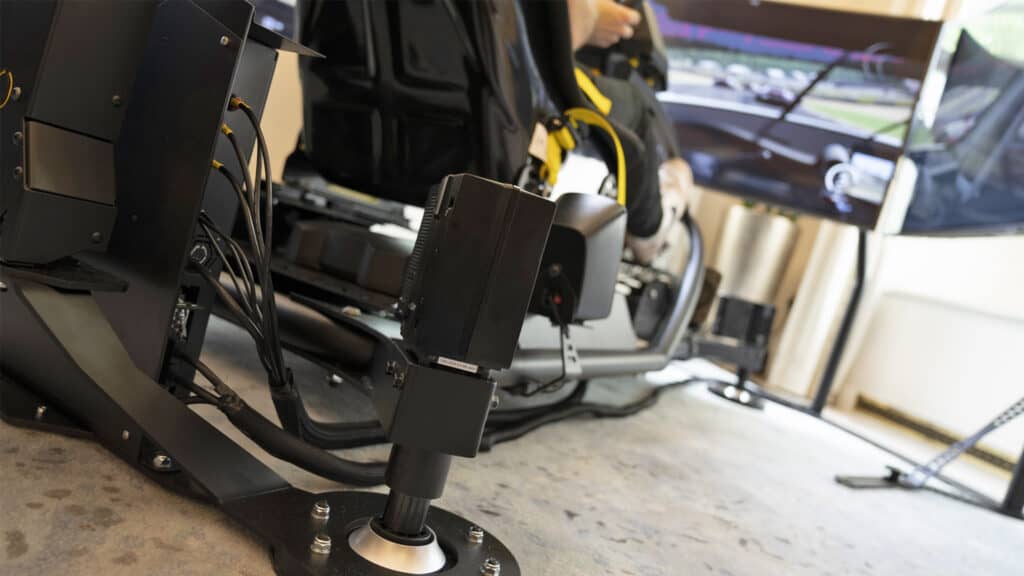
Of course, there were still elements that I feel could realistically be improved on. Additional belt tensioning and movement would add more to the realism under braking, some extra subtle vibrations at high speed through the base of the seat and indeed the pedals would have a similar effect.
I feel that if you were to combine this high-fidelity haptic-based motion with extras such as wind generation and some form of more realistic sound simulation, you would be well on your way to optimising the potential of sim racing technology to its maximum.
As this develops, so does the synergy between digital and analogue motorsport. Haptic technology doesn’t single-handedly create perfect sim racing immersion. It does, however, make a noticeable step forward towards the sensations of real-world driving.
Not only did I feel more connected than ever before to the virtual car underneath me, but I also had a blast using it. After all, sim racing needs to be fun too.
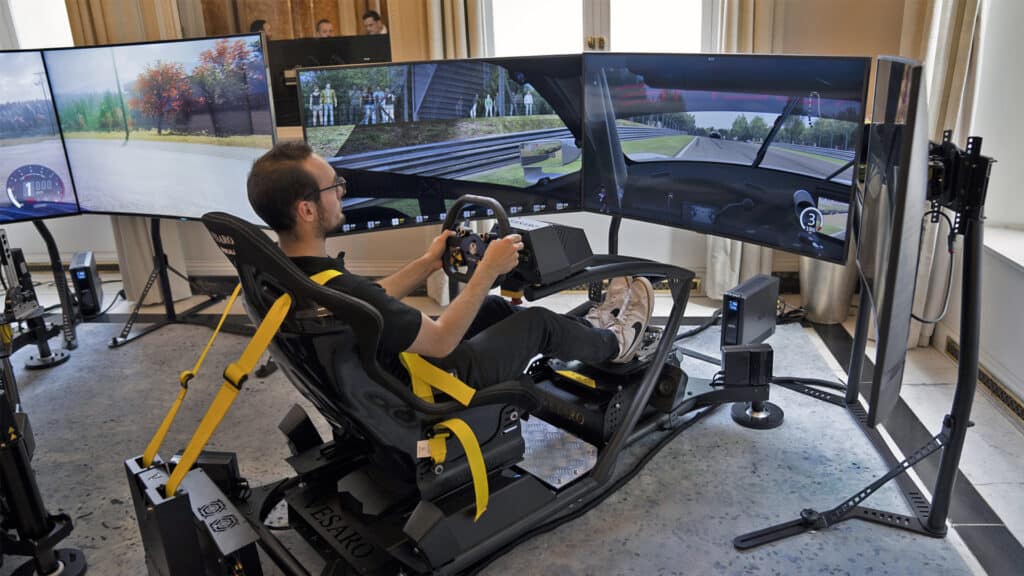
While I do not see this technology appearing in most living rooms for some time now, given the general cost and complexity, I can certainly see it being a fantastic option for driver training sessions, experience centres – it will be used for officially licenced F1 locations soon – and those without budget restrictions looking to create the most immersive possible experience available.
On a macro level, I don’t think sim racing can ever give us complete realism, both physically and mentally. It will never fully convey the intense g-forces, nor be able to safely recreate the very real sensation of fear, but it does provide you with a practical and accessible alternative to driving a racing car.
Developments such as haptic technology bring us ever closer to reality in the areas where it is truly possible to get near, and we are now at the point where the ties are strong enough that one can directly impact the other.

